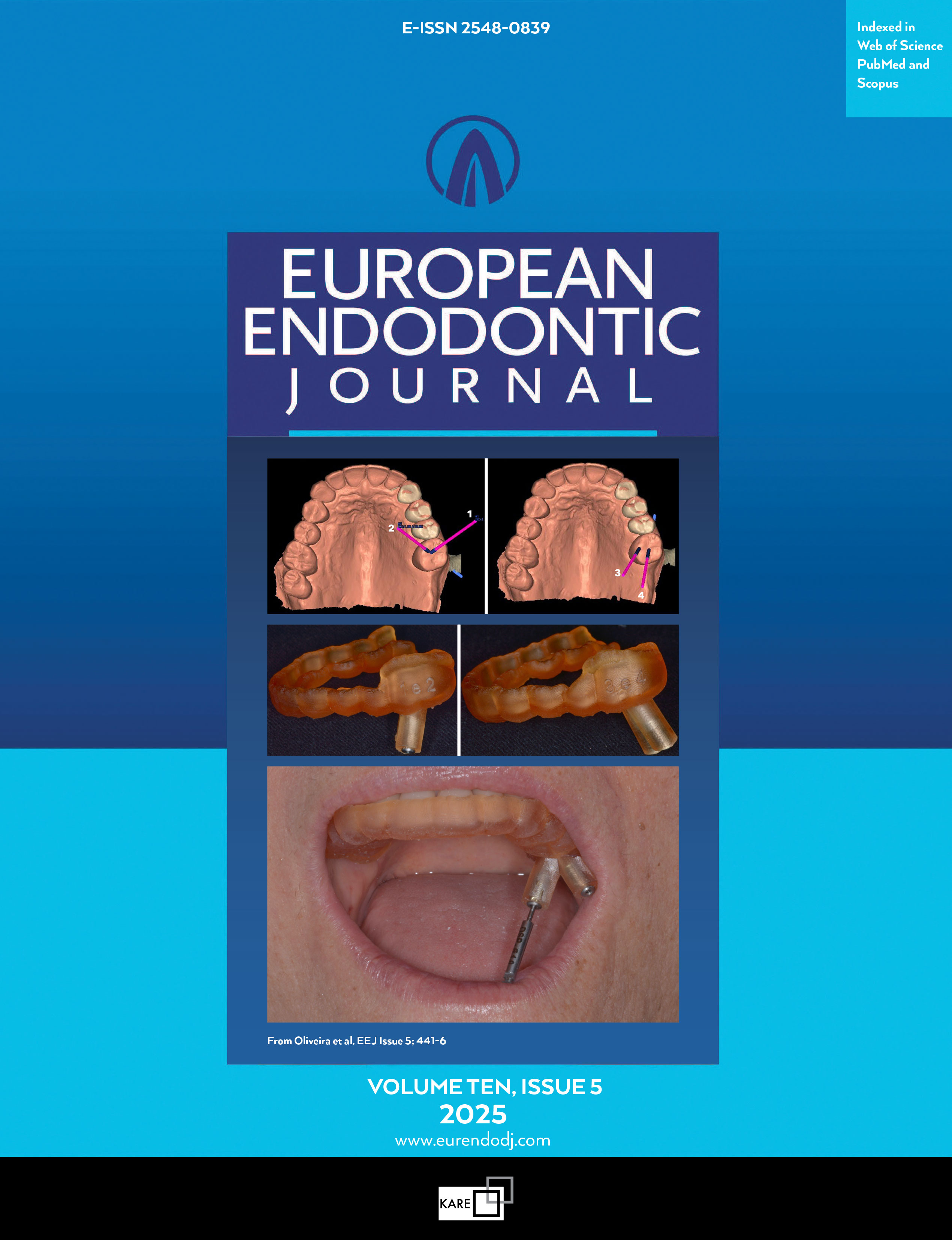Metrics
2024 IMPACT FACTOR
5 year Impact Factor
Eigenfactor Score
2024 CiteScore
Journal Citation Reports
(Clarivate 2025, JIF Rank)
Internally Heated Sodium Hypochlorite for Endodontic Irrigation: A Narrative Review of Efficacy and Clinical Applicability
Dina Abdellatif1, Alfredo Iandolo1, Mariangela Cernera2, Luigi Cecere3, Carlo Rengo2, Gianrico Spagnuolo2, Niccoló Giuseppe Armogida2, Davide Mancino4, Christophe MEYER51Faculty of Dentistry, University of Marie et Louis Pasteur, Besancon, France; Centre Hospitalier Universitaire, CHU Besancon, France; Laboratoire Sinergies EA 4662, University of Franche-Comté, Besancon, France2Department of Neuroscience, Reproductive and Odontostomotological Sciences, University of Naples Federico II, Naples, Italy
3Department of Medicine, Surgery and Dentistry, ScuolaMedica Salernitana, University of Salerno, Salerno, Italy
4Faculty of Dental Surgery, Federation of Medicine Translational of Strasbourg and Federation of Materials and Nanoscience of Alsace, University of Strasbourg, France
5Centre Hospitalier Universitaire, CHU Besancon, France; Laboratoire Sinergies EA 4662, University of Franche-Comté, Besancon, France
Objective: Endodontic therapy aims to reduce the microbial load within the root canal system to a level manageable by the hosts innate defence mechanisms. Both the shaping and irrigation phases are critical determinants of treatment success. Sodium hypochlorite (NaOCl) remains the irrigant of choice owing to its potent tissue-dissolving and antimicrobial properties. To enhance the efficacy of NaOCl, various activation techniques have been proposed, including manual agitation, sonic and ultrasonic activation, as well as thermal enhancement. Notably, the internal heating of NaOCl to temperatures approaching its boiling point has been shown to increase its chemical reactivity by up to 200-fold.
Methods: An electronic literature search was undertaken using three databases: PubMed, Scopus, and Web of Science. The following keywords were employed: (irrigant OR NaOCl OR sodium hypochlorite) AND (heating OR pre-heating OR warming OR heat activation). After the removal of duplicate records and the exclusion of irrelevant titles and abstracts, the remaining studies were screened for eligibility.
Results: A total of 226 records were identified: 110 from PubMed, 98 from Scopus, and 18 from Web of Science. Following the removal of 33 duplicate entries, 193 records remained for initial screening. Of these, 153 were excluded for not meeting the inclusion criteria. The full texts of the remaining 40 articles were retrieved and assessed in detail. Twenty-one studies met the inclusion criteria. Collectively, these studies indicated that internal heating of NaOCl enhanced its antibacterial efficacy, accelerated the dissolution of organic tissues, and improved smear layer removal, all while remaining compatible with conservative root canal shaping protocols.
Conclusion: Owing to its simplicity, cost-effectiveness, and ease of implementation within routine clinical protocols, the internal heating of sodium hypochlorite represents a promising adjunct in endodontic irrigation. This technique has the potential to improve treatment predictability and enhance patient outcomes. (EEJ-2025-04-065)
Manuscript Language: English


